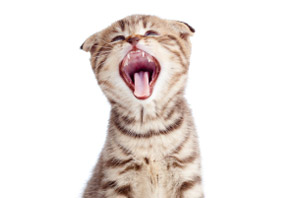Celebrity Big Brother's Judi James on pet behaviour

There’s been no shortage of incidents in the Celebrity Big Brother house for body language expert Judi James to get stuck into this summer.
However, as well as spending her time analysing the behaviour of Gary Busey, writing books and running training courses and seminars, Judi is the owner of three cats – so the study of pet body language is naturally something that interests her.
She’s managed to find time to speak to Petplan about her love of animals and what she’s learnt about how to read her pets’ behaviour…
"I’ve got three cats. Two half Siamese black cats, Teddy and Freddy, and a black stray I adopted called Sweety."
"Although I have three cats, I’m a lover of all animals and I’m involved with helping raise funds for Battersea Dogs and Cats Home. My road holds a street party every year with a dog show – it’s not exactly Crufts but we have a great time and the money raised is always appreciated."
"Battersea has so many challenges. The buildings for the cats are brilliant but there are other areas of the building that need work. However, I think the biggest challenge they face is the fact that, because they are so well known and have been going for so long, people assume they don’t need much help – but that’s really not the case."
"All of my behavioural work is done with humans. I look to simian behaviour a lot as the way monkeys, chimps, etc. act in situations can tell us a lot about why we do certain things."
"The difference between us and our pets is a lot more pronounced than the difference between us and primates. Where people can struggle with pets is that we’ll look for similarities between them and us when there might not be any."
"Pet owners can assume they know too much about their pets. A lot of what people do is projection – where we attribute feelings to pets based on how we feel – sometimes that ‘look of love’ can just be your pet asking for food!"
"Most of what I know about how to read my pets comes from programmes like ‘Supernanny’. Simple things like rewarding them when they do well is some of the best advice you can give. However, I find that pets are a lot quicker to catch on to the tricks we use than children!"
"I would love to expand my work and do something with pets soon. I’d like to team up with an animal expert and do research into pet behaviour and body language – although animals can’t tell you if you’re wrong like humans, so it presents plenty of challenges."
"Keep doing the things you’re supposed to be doing and don’t assume too much knowledge – that’s probably the one piece of advice that I’d give to pet owners."
Petplan’s guide to common pet body language indicators
One way to help ensure a good relationship with your pet is to learn how to distinguish their moods and emotions. Here are some common emotions experienced by pets along with body language indicators that you may recognise in your own dog:
- Playful and happy. In dogs a happy, playful mood is outwardly shown with bent forepaws and raised hind, tail waving side to side and mouth slightly open exposing the tongue. This may be accompanied by excited barking. In cats happiness is less obvious to detect but can manifest itself with a relaxed posture and gentle purring.
- Relaxed and content. A relaxed dog may assume a loose stance with its tail down, ears up, head high and mouth slightly open. While for cats’ a relaxed mood is indicated if there is no tension in the body and if its eyes are blinking softly or half closed.
- Focused and alert. An alert dog usually stands with a slight forward lean, its mouth closed, ears forward and tail up but not stiff. A cat that is focused on a toy or prey will keep its body low to the ground with its hind legs coiled underneath and eyes focused on its target.
- Fearful and distressed. A distressed or fearful dog will stand crouched with its body lowered, ears back and tail down. While for cats fear can be detected by the flattening of its ears against its head, wide eyes, arched back and fluffed up fur.
- Aggressive and angry. An aggressive dog will adopt a stiff stance leaning forward, lips curled and nose wrinkled, teeth will be exposed and tail raised and bristled. An angry cat’s whole body is rigid, ears are held back, tail held out straight and may be hissing or spitting.
What have you noticed about your own pet's behaviour and how do you interpret it? Let us know your thoughts below…

